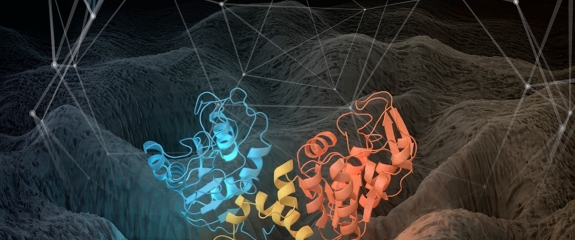Supercomputer Simulations Enhance Understanding of Protein Motion and Function

Supercomputing simulations at the Department of Energy's Oak Ridge National Laboratory could change how researchers understand the internal motions of proteins that play functional, structural and regulatory roles in all living organisms.
The team's results are featured in Nature Physics.
"Proteins have never been seen this way before," said coauthor Jeremy Smith, director of ORNL's Center for Molecular Biophysics and a Governor's Chair at the University of Tennessee (UT). "We used considerable computer power to provide a unified conceptual picture of the motions in proteins over a huge range of timescales, from the very shortest lengths of time at which atoms move (picoseconds) right up to the lifetimes of proteins in cells (roughly 1000 seconds). It changes what we think a protein fundamentally is."
Studying proteins – their structure and function--is essential to advancing understanding of biological systems relevant to different energy and medical sciences, from bioenergy research and subsurface biogeochemistry to drug design.
Results obtained by Smith's UT graduate student, Xiaohu Hu, revealed that the dynamics of single protein molecules are "self-similar" and out of equilibrium over an enormous range of timescales.


